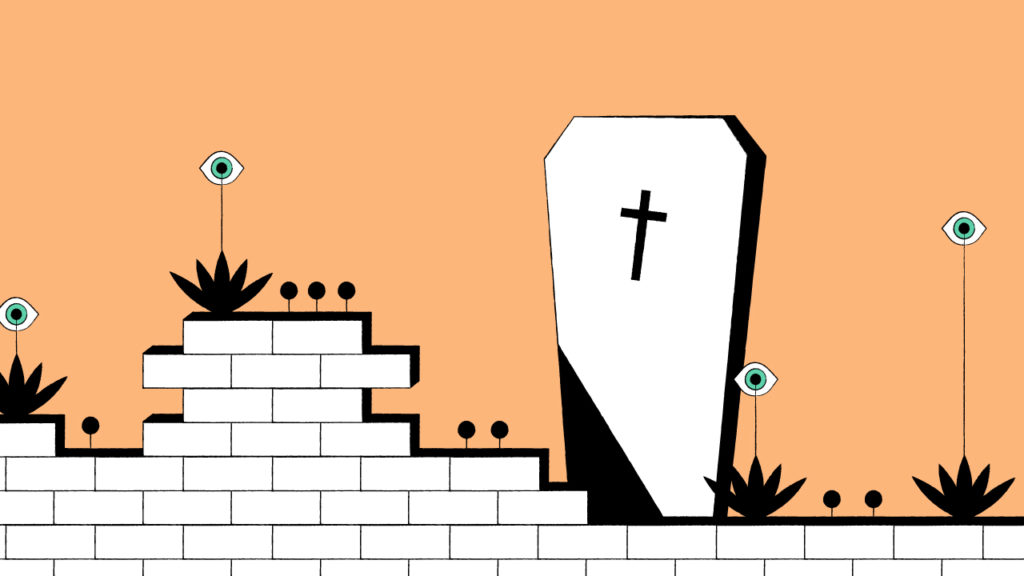Should brands enter into the increasingly weird space of internet and meme culture for marketing purposes? Panelists offered differing opinions at ‘Wacko World and the Rise of Memelord Brands,’ but agreed that unless those brands are willing to use alternative metrics for success while giving up creative control to the content creators they employ, it’s likely to be an ineffective marketing tool.
Sarah Rabia, global director of cultural strategy at TBWA Backslash, was joined by Snap’s camera platform brand manager Amelia Hall, Brad Zeff, chief strategy officer and general counsel at GIPHY as well as meme creator and media personality, Ka5sh.
Hall suggested that brands can have a meaningful role as patrons of content-creators in weird meme communities, but it comes with inherent risk.
“There’s risk involved. You’re kind of putting your brand in the hands of a 20-something-year-old…but I think that brands need to realize that if they [want to be] embedded into these communities that they kind of need to give the reins up a little bit,” said Hall.
“As communication becomes increasingly more 1:1 and people become skeptical about the ‘influencer industrial complex,’ and sponsored content and broadcasting Facebook… all this kind of broadcast-oriented social platforms vs. narrowcasting, which is what’s happening in DMs and Snapchat and iMessage…how do brands even determine the amount of share of voice you’re commanding when it’s happening in those behind-the-scenes spaces? That’s going to be a big question that lots of platforms will need to solve.”
“How do we guarantee that a brand will have their content seen or used in a conversational context when measurement is increasingly difficult?” Hall asked, rhetorically.
Brad Zeff of GIPHY shared similar thoughts on measurement.
“You might not be able to measure it in terms of a specific, ‘you spent x amount of dollars and got 2x back.’ I think there needs to be a commitment from brands that, there’s a place for direct-response and there’s a place where, if you want to exist and be let into people’s bedrooms then you need to create cool content that doesn’t have ‘tune in’ all over it and huge logos.”
“Let the creators be the creators for the sake of creating interesting things and do it in a way that dissociates somewhat from traditional ROI. If that really is the path. If in the end, it’s ‘click here to buy this,’ that actually doesn’t work. That will ruin it, and so, there’s an opportunity for brands but they actually have to know who they are and subsidize creativity,” said Zeff.
“Brands are going to be around, so why don’t we just push that a new direction,” said Zeff. “As a practical matter, brands are everywhere where ‘Wacko World’ exists…it is inevitable, and brands are part of our culture,” Zeff continued, “What we don’t want is brands who just think that they’re part of our tribe when they’re really not. I see a huge opportunity for brands right now…there’s a blurry line between what a brand is and what a person is; brands are becoming more like people and people are becoming more like brands.”
“The fundamental challenge… and this is a tricky one: If I’m a brand and we know that the momentum is going toward more privacy and more 1:1 communication, how can brands be a part of that?”
Zeff’s advice to brands who want to tap into memes and internet humor is to “not treat every interaction like a transaction. You actually have to have an identity outside of trying to sell shit.”
Ka5sh provided a different perspective as a content creator and firm fixture within these meme communities.
“Brands will never be a part of meme culture or internet culture, they’ll always be outliers. Most of the time it sounds like, ‘Hey fellow millennials, how do you do?’”
“I think for 99 percent of the time when a brand gets ahold of a meme it ends it,” said Ka5sh. “Anytime Wendy’s or Burger King or Target, Walmart, Netflix… any brand, gets ahold of a meme format that was sort of popular…they cut the shelf-life of it in half. No one wants to participate with it, it’s like your dad just got in on the joke.”
“For 99% of the time, if a brand gets a hold of a meme it ruins it.” – @ka5sh @ ‘Wacko World and the Rise of the Memelord Brands’ #SXSW #SXSW2019 pic.twitter.com/fX19DQwdXr
— AList @ #SXSW (@alistdaily) March 11, 2019

